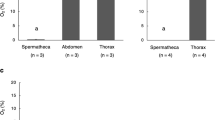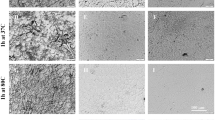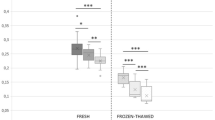Abstract
LOW-TEMPERATURE storage (+ 5° to − 79° C.) has been the primary means of preserving the life and fertility of mammalian spermatozoa in vitro. Experiments in our laboratory have repeatedly shown that low levels of carbon dioxide prolonged the life of bovine sperm at 37° C. under either aerobic or anaerobic conditions1. Recent experiments have shown that high concentrations of carbon dioxide in a properly buffered medium reversibly inhibit sperm motility and metabolism. Preliminary results have shown that the fertility of bovine semen stored for several days at room temperature in a diluent saturated with carbon dioxide is not impaired2.
This is a preview of subscription content, access via your institution
Access options
Subscribe to this journal
Receive 51 print issues and online access
$199.00 per year
only $3.90 per issue
Buy this article
- Purchase on Springer Link
- Instant access to full article PDF
Prices may be subject to local taxes which are calculated during checkout
Similar content being viewed by others
References
Baker, F. N., VanDemark, N. L., Salisbury, G. W., and VanTienhoven, A., J. Animal Sci., 11, 788 (1952). Salisbury, G. W., and Kinney, jun., W. C. (unpublished results, 1953). Kinney, jun., W. C., M.S. thesis, University of Illinois (1954).
VanDemark, N. L., and Sharma, U. D., J. Dairy Sci., 40, 438 (1957).
Author information
Authors and Affiliations
Rights and permissions
About this article
Cite this article
SALISBURY, G., VANDEMARK, N. Carbon Dioxide as a Reversible Inhibitor of Spermatozoan Metabolism. Nature 180, 989–990 (1957). https://doi.org/10.1038/180989a0
Issue Date:
DOI: https://doi.org/10.1038/180989a0
This article is cited by
Comments
By submitting a comment you agree to abide by our Terms and Community Guidelines. If you find something abusive or that does not comply with our terms or guidelines please flag it as inappropriate.



